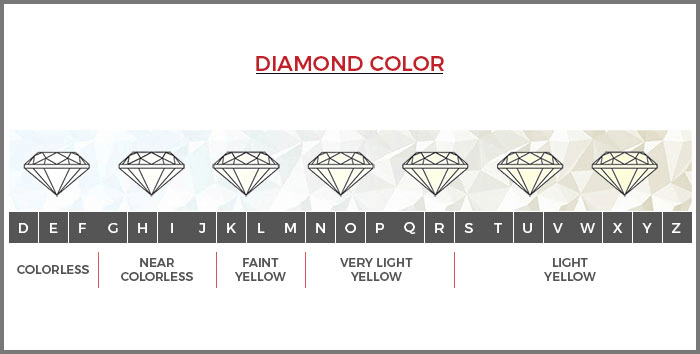Colour
It was only in the last century that a globally acceptable grading standard was developed.
String of Sparkling Stories
This standard is known as the “4Cs” system of grading diamonds and is based on “Colour”, “Clarity”, “Cut” and “Carat Weight” of a diamond. Among these, the first two – Colour and Clarity are natural occurrences in diamonds and we rarely have any control over these. The other two – Cut and Carat Weight are defined by the manner in which a diamond is cut and polished.

Interesting Trivia: When we talk about the colour of a diamond, we actually refer to the lack of colour in that particular diamond. The purest diamonds that contain no other elements than carbon are colourless. The colourless diamonds are the rarest. Most diamonds have some form of impurity elements other than carbon inside of them which absorb certain wavelengths of light causing diamonds to appear yellow, blue or other wide spectrum of colours.
The whiter or more colourless the diamond, the higher is its value. As per the grading system and chart defined by the Gemmological Institute of America, diamond colours range from D to Z – D being the purest, completely colourless diamond. Colour inclusions in a diamond then increase in a sliding scale all the way down to Z.
- D (colorless) Highest quality color grade
- E-F (colorless) Only trained gemologist can detect minimal trace of color
- G-H (near colorless) Color is difficult to detect. Only noticeable when compared to colorless grades.
- I-J (near colorless) Color is slightly noticeable
- K-M (yellow tint) Color is noticeable
- N-Z (yellow tint) Color is clearly noticeable
Diamonds that fetch the highest value are generally graded D to F in colour. However, these are rare to find and extremely costly to own. Then there are grades G to I, wherein diamonds are visually colourless to the naked and untrained eye. As you go down the grade scale, say J to M, tinges and hints of yellow or brown colour start creeping into the diamonds.
Hard Fact: Grading a diamond’s colour is very difficult using naked eye. Most labs have a set of “master stones” that define the highest and lowest limits of acceptable colour or lack of it within a stone. A trained gemmologist keeps placing the diamond to be graded right next to different master stones and compares their shades until the diamond’s shade matches the colour of one of the master stones. The diamond gets the colour grade of its closest matching master stone.

